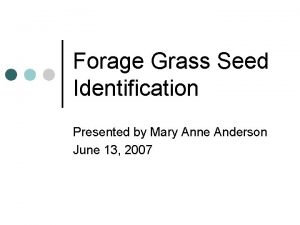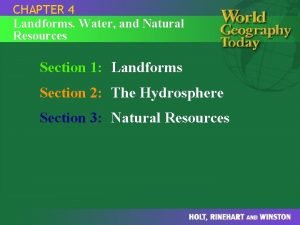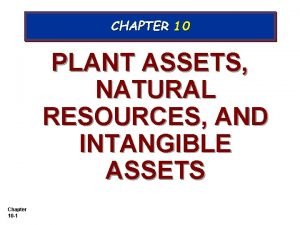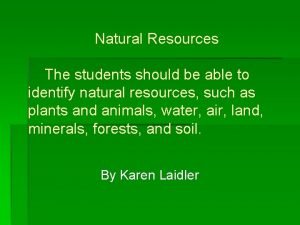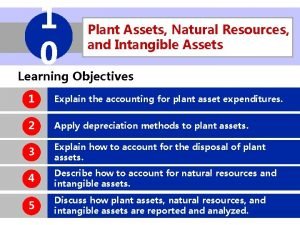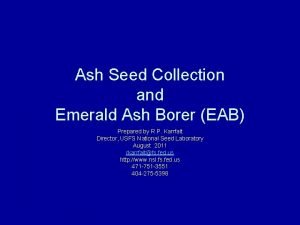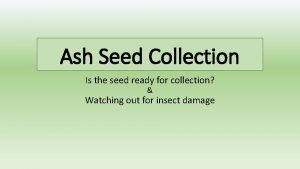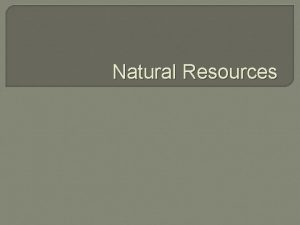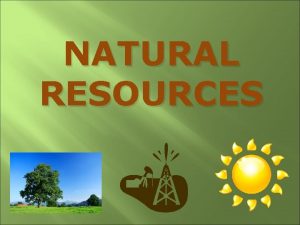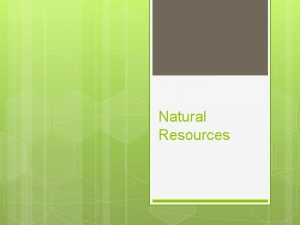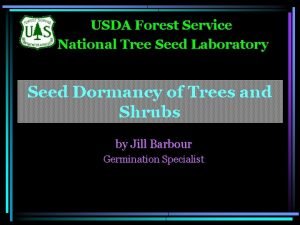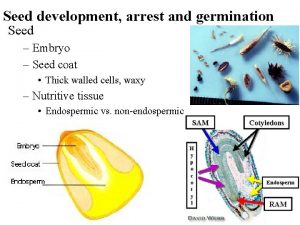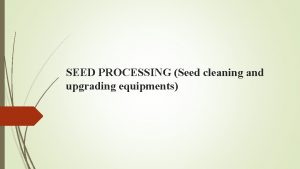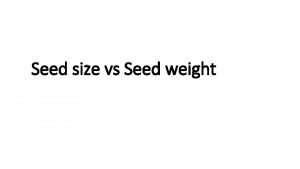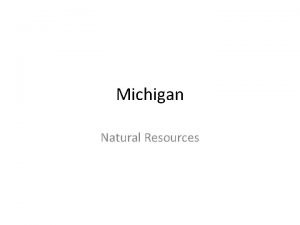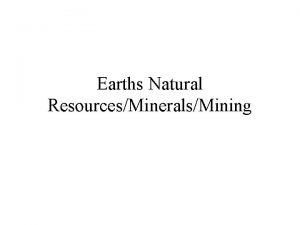Ash Identification and Seed Collection USDA Natural Resources


















- Slides: 18

Ash Identification and Seed Collection USDA Natural Resources Conservation Service Rose Lake Plant Materials Center: Dave Burgdorf, John Leif, John Durling, Sergio Perez Presentation Goals Guidance in seed collection Presentation Overview Summary Ash Tree Identification Questions 2/2/2022 USDA NRCS user@domain

2/2/2022 USDA NRCS user@domain Presentation Goals To provide guidance in identification of Ash trees l To provide guidance in the collection of Ash seeds for long term storage and preservation l Previous Next

2/2/2022 USDA NRCS user@domain Presentation Overview l Explain how to identify four Ash species – – Black Ash White Ash Green Ash Blue Ash Provide guidance in the collection of seed for the Plant Material Center l Summary l Questions l Previous Next

2/2/2022 USDA NRCS user@domain Ash Trees vs. Other Trees l Branching Opposite or Alternate? – Alternate = NOT an Ash – Opposite = Ash, Maple, Dogwood, or Buckeye l Leaf Arrangement Pinnate or Palmate? – Palmate = NOT an Ash – Pinnate = Ash or Boxelder l Number of leaflets on a leaf? – 3 – 5 leaflets = Boxelder – 7 or more leaflets = Ash Previous Next

user@domain 2/2/2022 Black Ash Identification l l l 40 – 60 ft. tall at maturity Found in poorly drained sites Terminal buds are more black than either green or white ash Leaves are 12 -16 inches long with 7 -11 pointed-oval, finely-toothed leaflets. Leaflets are tight against rachis (no petiole) Previous Next

user@domain 2/2/2022 Identifying Black Ash Leaves are 12 -16 inches long with 7 -11 pointedoval, finely-toothed leaflets. Leaflets are smooth darkgreen, leaflets tight against rachis Black Ash seed Black ash grows 40 -60 feet in height depending on the soil type. Previous Next

user@domain 2/2/2022 Green Ash Identification l Sometimes called Red Ash l 40 – 55 ft tall at maturity l Found in moist or poorly drained soils l Leaflets on short petiole, twigs round l Upper and lower sides of leaflets similar color, twigs to not “flake” Previous Next

user@domain 2/2/2022 Green Ash Identification Green Ash tree Green Ash seed Previous Next Leaflets on short petiole

user@domain 2/2/2022 White Ash Identification l 45 – 75 ft tall at maturity l Found in upland sites l Leaflets on short petiole l Underside of leaflet paler than the upper surface l Twigs “flake” Previous Next

user@domain 2/2/2022 White Ash Identification Leaflet on short petiole White Ash tree Pale underside of leaflet White Ash seed Previous Next

user@domain 2/2/2022 Blue Ash Identification l Least common of the four species in Michigan l 40 – 50 ft. tall at maturity l Leaflets on short petiole l Twigs 4 -sided with low corky ridges extending between the nodes Previous Next

user@domain 2/2/2022 Blue Ash Identification Blue Ash Tree Blue Ash seed Previous Next Blue Ash leaflet short petiole

2/2/2022 USDA NRCS user@domain Guidance in seed collection l When to make collections l What to collect l How to handle the seed – Packaging – Labeling – Shipping Previous Next

user@domain 2/2/2022 Seed Collection WHEN TO COLLECT: September through December. Fruit normally ripens August through September but will sometimes remain on the tree until the following spring. l WHAT TO COLLECT: Collect 1 – 2 cups of fruit (samara) from each species at each site. KEEP SAMARA FROM EACH SPECIES SEPARATED. l Previous Next

user@domain 2/2/2022 Seed collection l HOW TO HANDLE COLLECTION: Place harvested seeds into a cloth or paper bag and label the bag to identify the sample. Complete Ash seed collection form and attach to seed bag. Store seeds under cool, dry conditions until shipment. l Send sample to: USDA-NRCS Rose Lake Plant Materials Center 7472 Stoll Road East Lansing, MI 48823 -9420 Previous Next

user@domain 2/2/2022 Summary l Step 1: Identify specific ash trees for collection. Identify to species. l Step 2: Collect mature fruit l Step 3: Complete Ash seed collection form and send to Rose Lake Plant Materials Center Previous Next

user@domain 2/2/2022 Additional Information l Plant Materials Website -http: //plantmaterials. nrcs. usda. gov/mipmc/ – Ash seed collection information – Access to related sites l C. D. for this workshop – Memo from MI NRCS State Conservationist – Information on Ash ID and seed collection – This presentation Previous Next

2/2/2022 USDA NRCS Questions: Previous Next user@domain
 Positive identification
Positive identification Grass seed identification
Grass seed identification Transformation processes
Transformation processes Fixed and variable resources examples
Fixed and variable resources examples Landsat collection 1 vs collection 2
Landsat collection 1 vs collection 2 D/a 30 days after sight
D/a 30 days after sight Plant assets natural resources and intangible assets中文
Plant assets natural resources and intangible assets中文 Some natural resources such as wheat and cattle are
Some natural resources such as wheat and cattle are Natural resources in the canadian shield
Natural resources in the canadian shield Natural resources from landforms
Natural resources from landforms Accumulated depreciation straight line method
Accumulated depreciation straight line method Natural resources and population growth
Natural resources and population growth Identify natural resources
Identify natural resources Problems of water resources
Problems of water resources Agriculture and natural resources abbreviation
Agriculture and natural resources abbreviation Plant assets, natural resources, and intangible assets
Plant assets, natural resources, and intangible assets Renewable vs nonrenewable resources worksheet
Renewable vs nonrenewable resources worksheet Proquest natural science collection
Proquest natural science collection Natural capital
Natural capital

